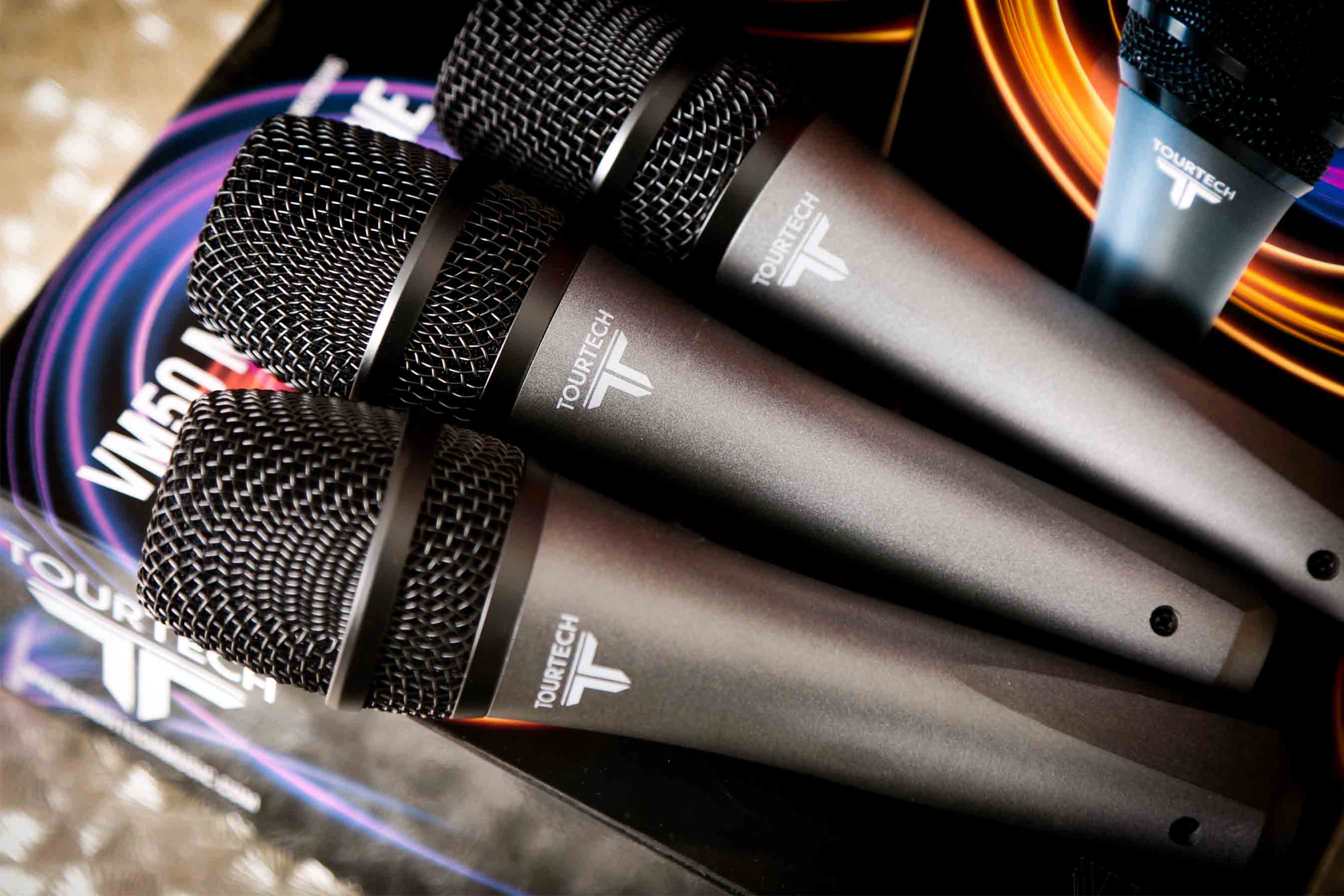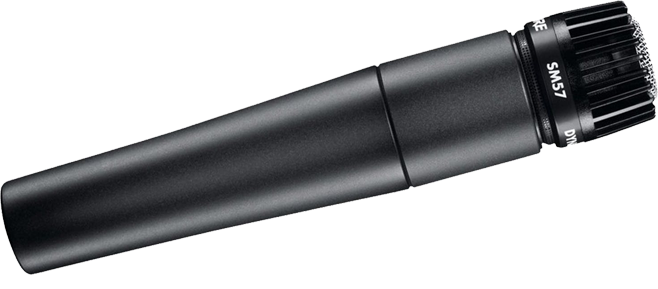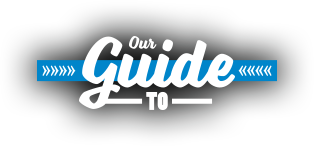What is a Live Microphone?
We all know what a microphone is – it captures sound and sends the signal into an amp, mixer or interface depending on the setting. But what makes a good mic for live use, over say, one for recording? There are a handful of desirable specs from construction type, polar pattern, impedance, connection and durability required to make a great live mic.

Dynamic Microphones
Dynamic microphones capture sound waves through a small diaphragm, which causes a magnetically suspended coil to move and creative an electric current. This process is relatively primitive and doesn’t produce the best sound fidelity. But it is more than good enough for a show when mixed in with a band, while also considering the quality of the PA system setup and venue’s natural acoustics.
Dynamic mics are the obvious choice for live shows. Between these and condenser microphones, they are the more affordable option – which isn’t a bad thing, considering your kit will probably get knocked about on the way to a gig or during the performance. They can also handle higher Sound Pressure Levels (SPL) and are therefore ideally placed in front of guitar cabs or drums.
Another bonus of a dynamic microphone is that they don’t require external power. You can plug one straight into a portable PA system or mixer and you won't have to worry about phantom power.
Condenser Microphones
Not as popular for live music as they are for recording, condenser microphones sound sharper and generally produce a greater quality sound. So why are they not used all the time? In some ways this works against them, as they can’t handle the same high SPL when placed in front of a loud instrument. They are generally better suited to lower studio volumes.
Condenser mics are quite fragile – far more than the durable dynamic mics. They also require power to work. A lot of mixers and preamps supply phantom power, but it’s just another part of your rig you’ll need to keep in mind.
Saying all that, there’s absolutely nothing wrong with using a condenser mic when applied to vocals in particular - and when you know how to look after your gear. It also heavily depends on personal preference and the sound you want to create.
What is the best polar pattern for a live mic?
Microphones respond to sound from different directions depending on their polar pattern. Some are known as omnidirectional, meaning they detect sound from any direction.
The ones we’re after for live music, however, are unidirectional. These mics have a more focused (usually heart-shaped) pattern, which reject noise bleed from unwanted sources such as an audience or other band members. Essentially, the mic will pick up whatever you point it at. Two of the most common patterns are cardioid and hyper cardioid, the latter of which picks up some a small amount of sound from the opposite direction to its main source.
Picking the best microphone for…
Electric Guitar
Mic’ing a guitar cab for a live show is a finicky business as it is, so make sure you have the best suited microphone to do the job. Cardioid dynamic mics are the ideal choice to deal with loud volumes and to focus solely on the sound coming out the speakers.
Bass Guitar
Similar to an electric guitar, you’re best served with a dynamic mic when mic'ing a bass. Will it be able to handle the lower frequencies? Yes, especially large diaphragm microphones which naturally respond well to those lower registers. Most models will state whether they have large or small diaphragms.
Acoustic Guitar
Simply follow the same rules for an electric if you’re using an acoustic amp. An alternate method for smaller shows would be to place a condenser mic in front of the guitar's soundhole, cutting out the amp entirely. This will provide clarity to your tone. If you have an electro-acoustic guitar, you could ignore mics altogether and run it straight into a powered mixer, where you can EQ it to your desired settings.
Vocals
Either dynamic or condenser mics will work for vocals as long as it has a cardioid, super cardioid or hyper cardioid polar pattern. omnidirectional, figure of eight or sub cardioid patterns could potentially cause it to feedback when you stand in front of a monitor.
A lot of singers like to use dynamic mics live because they sound warmer, but it depends heavily on your musical style. If highly detailed vocals are integral to your show or you perform spoken word and want every annunciation heard, condenser mics will serve you well for those smaller nuances.
Drums
Like guitar and bass, drums are very loud. They can cause problems for condenser mics with brittleness or overtones. That is why you're safest with a set of dynamic cardioid microphones. Each drum needs to be mic’ed individually to isolate the sound resonating from each drum, while cutting out any bleed effect from the rest of the kit. Lot of manufacturers make drum mic sets that include and number of mics and cables to get you started.
Keyboards & Synths
The same situation as guitar and bass when plugged into an amp. Keys produce a naturally high-level line output, so you've got to watch out for clipping when using a microphone. The other simpler and more effective option is to plug your kit straight into the PA system, making the most of the stereo outs - if it has them.
What are the best live microphones?
Our range of microphones on offer at Andertons can massively differ in price, from models under £100 right up into their thousands. We also have a long list of brands, each one adding something new to the standard microphone design or colouring the sound with a unique tint. Here are some of our most popular and favourite picks.
Shure are world-renowned for making dynamic microphones that cover both live and recording purposes equally well. The SM57 and SM58 are two of the most widely bought mics ever. Used by bedroom jammers, right up to iconic producers and singers, Shure are genuinely affordable - yet offer unparalleled quality at their price and well beyond.
Their two famous mics are tailored towards instruments and vocals respectively, capturing a warm, transparent tone. If you’re after something a little more unique, the Beta 57 and 58 use a super cardioid polar pattern, adding a particularly wide characteristic to your sound.
Their quality KSM8 mic is the first ever dual-diaphragm dynamic handheld design in the world. It can adapt to a wide variety of environments while maintaining virtually no proximity effect, off-axis rejection and a highly accurate output.
Another one of the big hitters in microphone manufacturing, Sennheiser offer a similarly accessible line of live microphones. The E835, E845 and E865 are highly consistent stage mics you can rely on time and time again. They have an extended high frequency response specifically tailored to stage use.
The equivalent E935, E945 and E965 are another step up in quality. The latter, like the E865, excels in high fidelity thanks to condenser construction. Super easy to use with a specific shockmount design and very little hum due to a compensating coil. Just a good old reliable that won’t let you down any time soon.
If you’re after some of the best very best live mics, Neumann is where you’ll find them. Their KMS range is tailor made to vocals and has become renowned as a first-class stage choice.
They capture an extremely high acoustic resolution, allowing you to get across every bit of nuance in your voice. They're even protected against extreme plosive sounds, which can come across as muddy in other mics.
As condenser microphones, you’ll want to look after a KMS extremely well (not only because of the price!) but it’s certainly worth it in the results. They’re ideal used with an in-ear monitor system because of their low self-noise and crosstalk behaviour. And with the super cardioid pattern, KMS mics are extremely good at supressing extra noise from 180 degrees.
At the other end of the spectrum to Neumann, Tourtech mics serve as a basic entry level option that's robust and easy to use. The VM50 is designed for beginners in mind – there really isn’t much you need to change or set up at all to get a gig-worthy sound, either for singing or mic’ing a cab.
Like all dynamic microphones, it has a high SPL capable of handling anything you throw at it. With a frequency range between 50 Hz and 12 kHz, it’ll provide you with a strong amount of sonic detail. And well under £50, it’s not too much of an investment if you need a multi mic setup for drums or a whole band. And admirable entry.
A great alternative to the likes of Shure and Sennheiser. Blue Microphones have a slightly different tonality the SM58 and E385 in their dynamic enCORE range, as their background is mainly routed in recording mics.
The enCORE 200 is a particular highlight, as it is the world’s first studio-grade phantom power active dynamic mic. You get more gain before feedback - meaning clearer, louder results in a mix. The flagship 300 is their live compact condenser microphone. This involves precise custom-designed circuitry for a refined, open tone, while maintaining maximum protection for all the rigours of a live show.
AKG mics come in right at a beginner level with the D5, P5 and P3S, which are strong enough for vocals and instruments alike. They also make some interesting drum session mic cases with enough individual microphones to cover any setup you need.
The D112 is a great mic specifically made for a bass drum. It has a large diaphragm, with excellent response to low frequencies. This means you’re getting an articulate sound that will mix in well with the rest of your kit.
Want to Learn More?
Check out more of our dedicated guitar guides and information:


